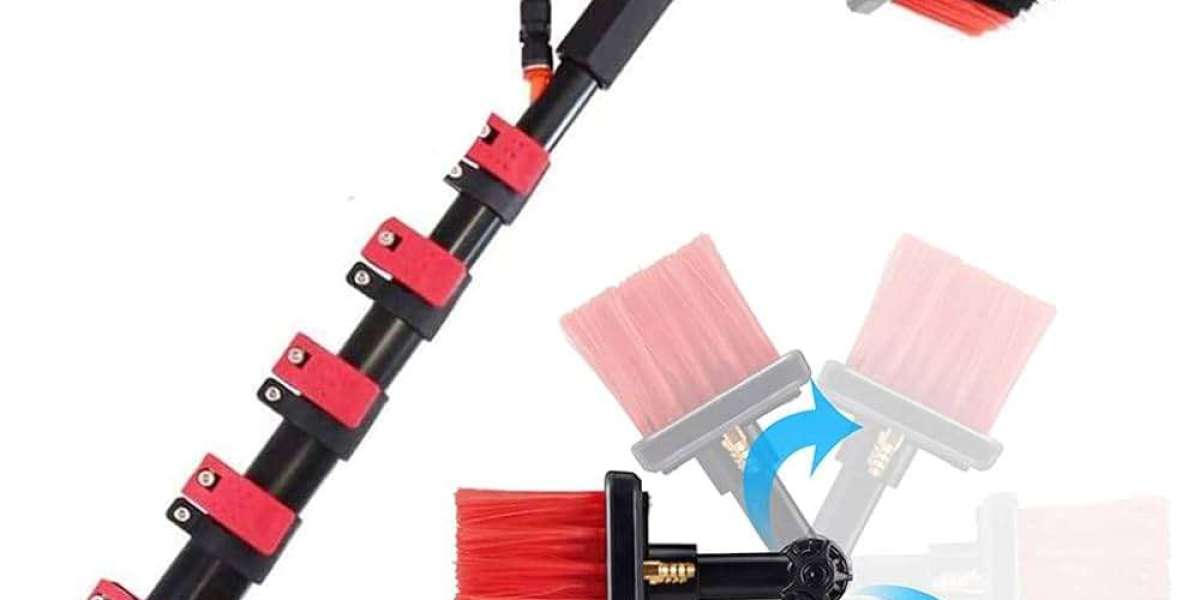buy window cleaning system can make a significant difference in efficiency, safety, and overall cleaning results. With a wide array of options available on the market, it's crucial to understand what features and components best suit your needs. This guide provides valuable insights into choosing the ideal window cleaning system, highlighting key factors to consider and offering recommendations to ensure you make an informed decision.
Understanding Window Cleaning Systems
Window cleaning systems come in various types, each designed to address specific needs and preferences. Here’s a brief overview of the most common types:
Traditional Systems: These include squeegees, scrubbers, and extension poles, often used with ladders or scaffolding.
Waterfed Pole Systems (WFP): These systems use telescopic poles, purified water, and brushes to clean windows from the ground, eliminating the need for ladders.
Van-Mounted Systems: Integrated setups installed in a van or truck, including water tanks, purification systems, and poles, for a mobile and comprehensive cleaning solution.
Reach and Wash Systems: Advanced systems combining telescopic poles with purified water for high-reach cleaning from the ground.
Automatic Cleaning Systems: These include robotic cleaners and other automated solutions for hands-free window cleaning.
Key Factors to Consider When Buying a Window Cleaning System
Purpose and Application
- Residential or Commercial Use: Determine whether the system will be used for residential or commercial purposes. Residential systems typically require less capacity and reach, while commercial systems need to handle higher volumes and reach greater heights.
- High-Rise vs. Low-Rise: For high-rise buildings, systems with extended reach and safety features are essential. Low-rise systems can be more straightforward and compact.
System Type
- Waterfed Pole Systems: Ideal for high-reach cleaning and safety. Consider the pole length, material (carbon fiber vs. aluminum), and purification system (reverse osmosis or deionization).
- Van-Mounted Systems: Best for professionals who require mobility and extensive equipment. Check for tank size, filtration system, and vehicle compatibility.
- Reach and Wash Systems: Perfect for high-reach cleaning with a focus on efficiency. Ensure the system includes a high-quality brush and adjustable pole.
Pole Length and Material
- Length: Choose a pole length that matches the maximum height you need to reach. Longer poles offer more reach but may be heavier and less manageable.
- Material: Carbon fiber poles are lightweight and strong, while aluminum poles are durable and cost-effective. Consider your budget and performance needs.
Purification System
- Type: Decide between reverse osmosis (RO) and deionization (DI) systems based on water quality requirements and budget.
- Capacity: Ensure the purification system can handle the volume of water needed for your cleaning operations.
Brush Head Features
- Type: Brush heads come in various styles, including fixed and rotating. Choose one that suits your cleaning needs and the type of windows you’ll be cleaning.
- Adjustability: Adjustable angles or interchangeable brush heads can provide greater flexibility and efficiency.
Water Supply and Tank Options
- Tank Size: Larger tanks are suitable for extensive cleaning tasks and reduce the need for frequent refills. Smaller tanks may be sufficient for residential use.
- Type: Options include vehicle-mounted tanks, backpack tanks, or direct water source connections. Choose based on mobility and convenience needs.
Safety Features
- Stability: Ensure the system provides stable support and prevents accidents. For high-reach cleaning, stability and safety are crucial.
- Ease of Use: Look for systems with ergonomic designs and user-friendly controls to minimize fatigue and improve efficiency.
Budget
- Initial Investment: Higher-quality systems may have a higher upfront cost but can offer better performance and durability.
- Long-Term Costs: Consider maintenance, replacement parts, and operating costs. A more expensive system might be more cost-effective in the long run if it reduces labor and improves cleaning results.
Support and Warranty
- Manufacturer Support: Choose a reputable brand that offers good customer support, training, and maintenance services.
- Warranty: A comprehensive warranty provides peace of mind and protection against potential issues with the system.
Recommendations for Buying a Window Cleaning System
Assess Your Needs: Carefully evaluate the type of cleaning jobs you perform and the environments you work in. This assessment will guide you in selecting the most suitable system.
Research Brands and Models: Compare different brands and models to find one that meets your requirements. Read reviews and seek recommendations from industry professionals.
Test the System: If possible, test the system or request a demonstration to ensure it meets your expectations and operates smoothly.
Consult Experts: Seek advice from window cleaning professionals or suppliers who can provide insights based on your specific needs and preferences.
Consider Future Growth: Choose a system that can accommodate potential growth or changes in your business. Investing in a versatile and scalable solution can be beneficial in the long term.
Conclusion
Choosing the right window cleaning system is a critical decision that can impact the efficiency, safety, and quality of your cleaning operations. By considering factors such as system type, pole length, purification, and safety features, you can select a system that meets your needs and provides the best value for your investment. With the right system in place, you can enhance your cleaning performance, reduce labor costs, and achieve outstanding results.








